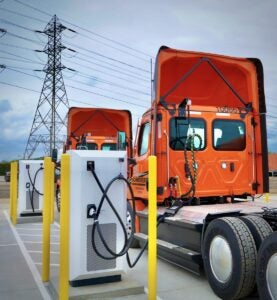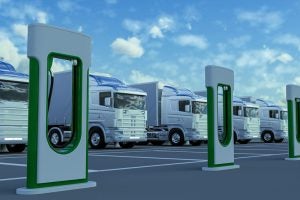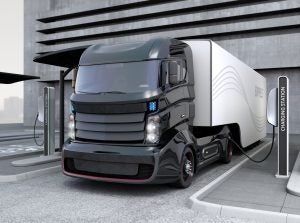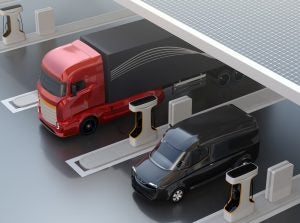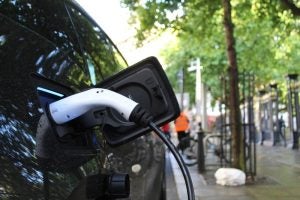It’s one thing to see electric trucks on the showroom floor, but it’s an entirely different feeling to see them out in the wild.
Earlier this month, I attended a ribbon-cutting event in South El Monte, California — one of the largest freight hubs in America — to celebrate the roll-out of 50 electric trucks by Schneider. While it is currently one of the largest deployments of class 8 EVs at a single depot, Schneider plans to add 42 more electric trucks to this location by end-of-year, which would have the climate impact of removing 2,400 gas-powered cars from the road.










